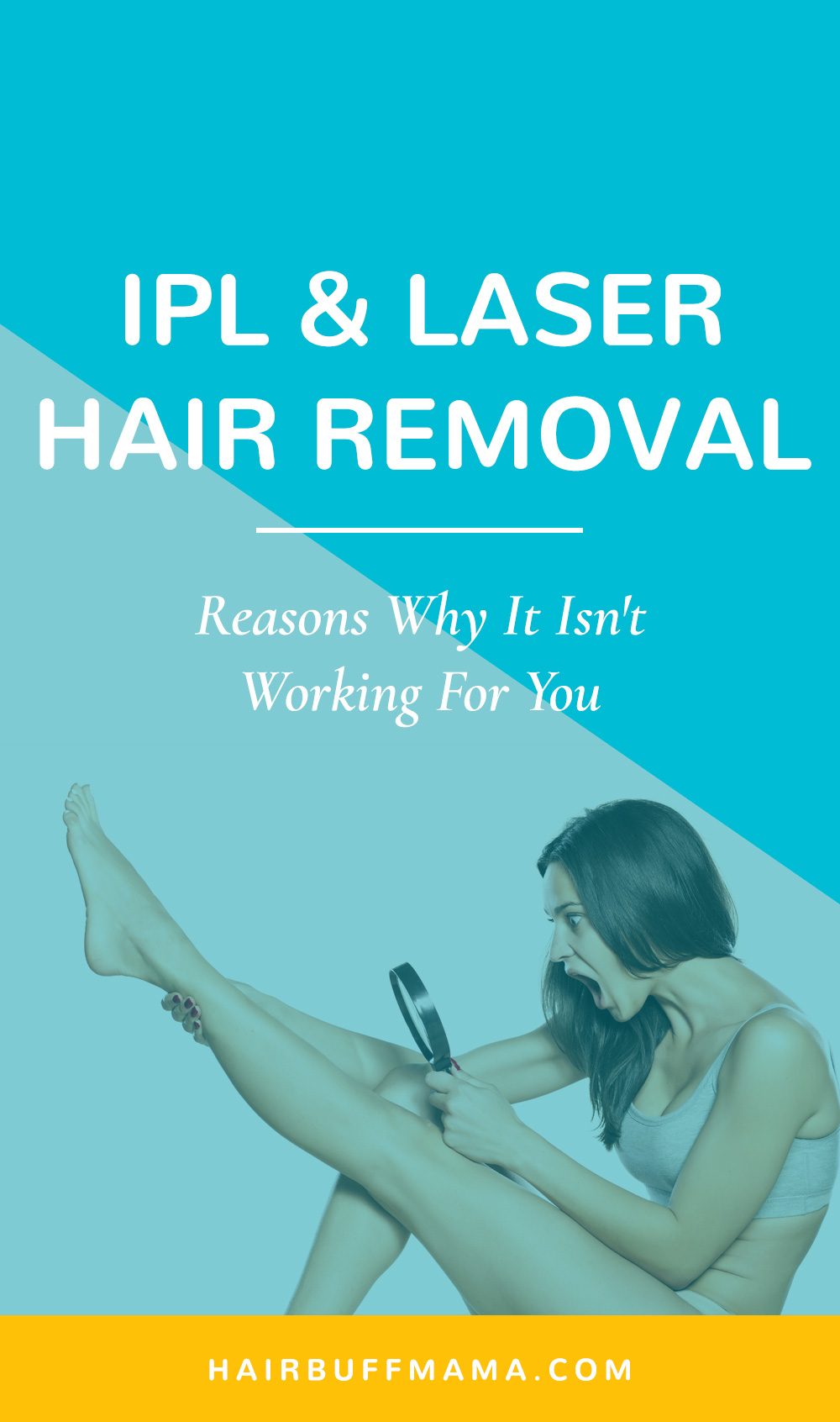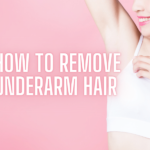“Why won’t my home-use IPL hair removal device work on me?”
So, a caveman traveled through time and decided to live in civilization.
He walked into a city for the first time and noticed that all of the people around him were groomed, and have far less hair than himself.
This may sound like the start of some kind of ‘dad joke’, but in the case of at-home laser hair removal, you are the caveman.
You spend your life using the traditional method of shaving or waxing to become hair free, only to see others with better results. So, one day, you decide to try and zap the hair away — using a light-based hair removal for home use.
Knowing that there are many light-based devices available for home-use nowadays, you decided to do your research to determine which one works best and ultimately bought one.
You’re feeling pretty satisfied and excited by this point. You read the manual, watched YouTube videos, and read blog tips and reviews on how to do it.
Finally, you experienced the first zap, and…Ouch! Well, only 1,000 more zaps to go…yay?
For most of these hair removal devices, it’s not until around the seventh session where you start getting the hair reduction results you desire. So, you continue zapping yourself until that fabled seventh session, but you’re not still not seeing the results you expected.
No hair reduction, slow growth, thinning. Nothing at all!
You may be asking yourself, what could have possibly gone wrong?
‘Why won’t my home IPL/laser hair removal device work on me?’
There are several reasons why.
Below are some common issues, and ideas of what to do if it didn’t work. They are:
1. You bought the wrong device for your skin type and hair color.
Pay close attention to this one, this is the most common mistake people make, so this section will very likely be the answer to your conundrum.
Some men and women bleach and dye their underarm hair. Yep, that exists. It became a trend in the 2000s, but why in the world would you dye your armpit hair of all things? Then, some of these people (perhaps after realizing what they’d done to themselves) decided to treat their armpit with a light-based hair removal device. And, being on a budget, they chose a device that’s for home use.
Zap. Zap. Zap. Zap.
After several sessions, the hair was still there. Of course, it will be. No laser or other light-based devices can treat white or gray hair; most have trouble with even blonde. So blue or red hair is off the table. It ONLY works on naturally dark hair.
So, let’s move on to skin types.
Generally, laser and light-based hair removal treatments work best for people with fair skin, or those that fall under Type I, Type II, and Type III. Therefore, a home laser or IPL device that can emit a pulse with a higher joule or energy level is recommended.
However, for darker skin tone, extra precaution is needed. They fall under Type IV, V, and VI. If you have darker skin, it will absorb more light resulting in burns. This means that if you have Type IV skin, you should get a device that has a lower energy output level.
For Type V or VI skin, use a device that has elos technology. Elos limits the heat source of the pulse coming from the device. Thus, the light energy level emitted through pulse is lesser making it safe to use for darker skin. This means that it’s very important to carefully analyze the energy level of a light-based device before getting one to ensure it’s suited to your specific needs.
Tip: Know your skin type very well and only treat a naturally dark hair color. Then get the best compatible home laser or IPL device for it.
1.a. You have medium brown skin or in between Type IV and Type V, or Type V and Type VI skin type.
I can’t stress this enough, but make sure to do your research before buying your IPL device, particularly for your skin type and your hair color. Each IPL device is specifically designed for certain characteristics.
For medium brown to very dark skin specific IPL devices are recommended, such as me Smooth and iluminage Touch, both of which utilize elos technology, which best serves darker skin. You may have made the mistake of buying a device that does not work efficiently for your skin and hair type.
Tip: Get a device with elos technology if you have Type V and VI. If you are type IV, get a device that has a very low energy level.
We have an article about the best hair removal devices for dark skin people here…
2. You’re not patient.
“Patience is bitter, but its fruit is sweet.” ~ Jean-Jacques Rousseau
Many IPL or laser device users give up if they don’t see the results they are hoping for right away. Treatment for permanent hair reduction takes time and requires plenty of patience, perseverance, and discipline with the treatment sessions and treatment plan. Without patience, results will not be met and you’ll just end up wasting money.
Tip: Need to say more? Be PATIENT.
3. You didn’t read the product manual thoroughly for your specific model.
When customers are excited to discover a new product, they sometimes get carried away with their enthusiasm and just skim through the manual, or simply skip reading it completely, all so they can try it out immediately.
But keep in mind that not all home light-based devices are designed the same way, and as with reason #1, they may have specific instructions for your hair and skin type. So, it’s very important to first refer to the user’s manual and read it thoroughly, before using the device in order to achieve the desired results.
Do not watch a demo from the manufacturer’s YouTube channel because it’s purely for advertising only. The models they use are already hairless anyway! Instead, watch a video from an actual buyer of the product for visual aid.
Tip: Read the product manual, and then watch a YouTube video of a real person using the device, in order to fully understand how to best use the product.
The Flash and Go Express offers a compact solution to unwanted hair in only 8 treatments. No cartridges needed.
4. You didn’t stick with the treatment plan.
This sort of goes hand-in-hand with the previous reason, a lack of patients. If you want to reach your goals, you have to commit and stick to your treatment plan. Each of these devices come with a recommended treatment plan, which is typically explained in the product manual. If you fail to follow the instructions or don’t keep up with the treatment plan, then you can’t complain when the product doesn’t work, and you don’t see the results you want.
For example:
Let’s say you have a busy profession. You have already started your first session, and you can only treat yourself during the weekends. Limit your activities during the weekends, and avoid going on weekend vacations. This can often be the hardest part, but there’s a high probability that you will forget your treatment if you’re more concerned with weekend parties and planning trips.
It’s better to just stay at your humble abode while performing your scheduled treatments. You can still go out of course, but make sure that you are not going to anything that day that will make you forget to do the treatment. Otherwise, just change your treatment schedule to weekdays.
Tip: Schedule your treatment sessions during weekdays. Then be consistent and stick with it.
5. You didn’t do any touch-up or maintenance treatments.
Many people make the common mistake of failing to do maintenance sessions after completing the initial treatment plan. Even if your device gives you the desired results after the designated number of sessions, you may not get the maximum benefits without intermittent touch-up treatments.
Normally, if the hair removal treatment was done by a professional or in a clinic, there is no touch-up necessarily needed. However, if the treatment was done only using a home device, then you’ll probably need a few maintenance treatments. Remember, the word “permanent” is really just a marketing tool.
So, what are these touch-up treatments?
It means that even though you already achieved the hairless result or permanent hair reduction. You’ll still need to continue using the device, just not on a regular basis. If the regular treatment session is done once a week, then a touch-up session is done at least once a month. This is to ensure that you are still delaying the hair follicles to grow.
Tip: Do not completely stop using the device even though you have already achieved the desired hair reduction results.
6. You have a low pain threshold.
“No pain, no gain.”
Reality check — even though some IPL device manufacturers promise painless hair removal, you should still expect a slight stinging sensation. After all, you’re shooting your body with a laser at point blank range. So, if you cannot handle this sensation during your sessions, you may have a low pain threshold. As a result, you simply got scared of the pain and just gave up.
Tip: If you have a low pain threshold, consider using numbing cream or cooling gels to reduce the pain experienced during treatments.
7. You used it on facial areas with thin hair such as the chin, upper lip, or ‘peach fuzz’.
Facial hair on the chin, upper lip, or “peach fuzz” are hairs that, by their nature, are very thin. Sadly, at-home IPL, or even laser treatments for hair reduction, simply don’t work on this sort of hair, no matter how noticeable or dark colored they are. Some hairs are just too fine for the laser to pick up.
I’ve noticed that a lot of customers don’t know this, yet they keep using their IPL device on areas with that hair type and continue to complain about its ineffectiveness. This info may be located in the fine print of the product manual, so hopefully, you haven’t bought a product for this purpose.
Tip: Never used your device to areas with very thin hair. It won’t work. Try considering professional help for these areas.
Another Tip: Consider getting a home-use IPL device that is designed to treat facial hair. Usually, these IPL devices have a separate facial cap like the Tria 4X Laser.
The Tria 4X Beauty laser is one of the most effective hair removal lasers on the market. While it isn't the cheapest laser, it's highly crafted and removes hair quickly.
8. You have very thin or fine hair body hair.
So, we now know that your IPL device won’t work on the very fine hairs on the face, but why is it not working on you regardless of the body location or area of treatment?
Some people are simply blessed (or perhaps cursed in this very specific case) to have generally thin body hair, and just as with the facial hair, may find these IPL treatments ineffective. Remember that IPL treatments work best with coarse, dark, and thick hair. Just like the issue above, your hair may be too fine for the laser to recognize it.
The solution to this is to replace your current IPL device with another more powerful model. This will enable the light energy to penetrate finer hair follicles, and be getting more precise treatment and the effects you desire. That said, it’s still not advisable to use these more powerful models on your face, as the skin covering your face is much thinner and more sensitive than other areas of your body.
Tip: Consider a home laser device instead of an IPL, or seek professional help.
9. You didn’t watch some YouTube demo videos (aside from #3, reading the product manual).
Though you have read the product manual from front to back, you might be missing on some essential things – watching YouTube videos. When people say experience is the best teacher, they are not kidding. A lot of tutorials, dos and don’ts, tips, and all manner of assistance can be found on YouTube.
The best part is that these tutorials and videos are made by the customers themselves, who have tried the product first-hand, and often have been using it for years. Take that as passing their knowledge and experience from years to your precious hands. Make use of the Internet and learn from them.
Tip: During your free time, browse YouTube, or even surf blogs on the internet on how to use the specific device.
10. You used it on areas with mole or tattoo.
Lasers, in general, are looking for pigments or colors. This is why the qualifications of skin types exist. Moles and tattoos, which have condensed volume of color, can confuse your device because it is to aim for the color and therefore direct the light energy into the skin rather than the hair, possibly causing some pretty bad burns. So, use caution around these areas.
Tip: Just don’t get this device if you are treating an area with tattoo or mole.
11. You may have a hormonal imbalance.
Last but not the least and the most important thing to know if all else fails. You may be suffering from hormonal imbalance. Women experience this more often than men. If a woman has irregular menses like heavy bleeding or unexplained weight gain, mood swings, insomnia, speak with your primary care physician to see if you have a hormonal imbalance.
For women with PCOS or polycystic ovary syndrome who suffer from hirsutism or excessive hair, you should not undergo any laser or light-based hair removal treatment until your hormonal imbalance is being treated. Transgenders also should speak with their physician about HRT or hormone replacement therapy.
Tip: Speak with your primary care physician to get you started with balancing your hormones or ask about hormone replacement therapy for transgenders.
The Philips Lumea Advanced IPL is no doubt one of the most popular IPLs amongst its peers. It removes hair in up to 4-5 treatments and is safe to use.
Final Words
If your home light-based device isn’t giving you the results you want, don’t jump to the conclusion that it’s defective. If you think that you already have the right device, go over the solutions again. Review the various reasons why it might not be working for you and take the necessary steps to solve the problem.
However, if after reading this makes you think that you really bought the wrong device, call the manufacturer if you are still qualified for their money-back guarantee or product window return.
IPL and laser hair removal methods are the most widely recognized treatments for permanently reducing hair growth. But it may not be for everyone. Remember this though, whether you plan on buying an at-home IPL or laser device, or choose to see a professional, it is very important to know first if you’re the right candidate for this type of treatment to avoid over-expectations.











